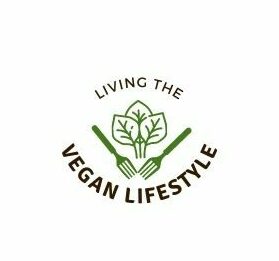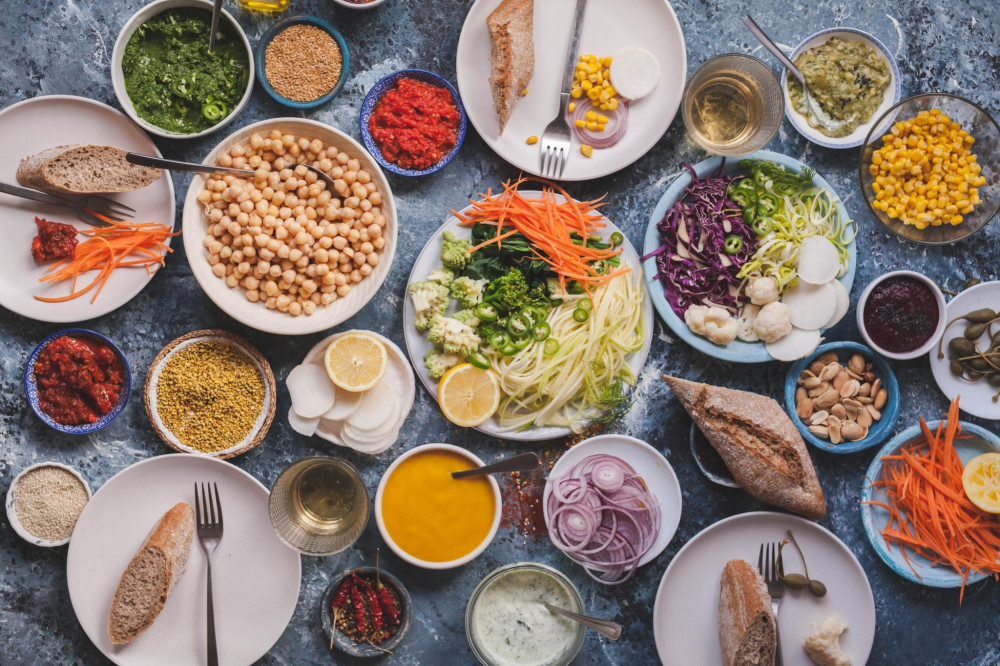What Is The Flexitarian Diet
What Is The Flexitarian Diet?
The Flexitarian Diet is a style that encourages mostly plant-based foods while allowing meat and other animal products in moderation. It’s more flexible than fully vegetarian or vegan diets. If you’re looking to add more plant foods to your diet but don’t want to cut out meat completely, going flexitarian may be for you. This article provides an overview of the Flexitarian Diet, its benefits, foods to eat and a one-week meal plan.
The Flexitarian Diet was developed by Brian Kateman, who became a vegan while participating in a 10-day vegan challenge. This made him discover the difference between strict vegan diets and flexitarian diets, both plant-based diets. Flexitarian diets allow some animal products such as meat, eggs, and dairy products. It can even be the case where dairy products are the main source of protein. Kateman also suggests that those who aren’t vegan should consider the Flexitarian Diet. How Do You Start a Flexitarian Diet?
Once you decide to try the Flexitarian Diet, it’s easy to make small changes to your diet. Just think of it to reduce meat or remove the higher calorie foods and less tasty foods. A flexitarian diet typically involves eating meat and seafood occasionally but more often consuming plant-based foods. It’s a way to get in some meat without having it become an everyday feature of your diet.
According to food writer Laurel Montgomery, “Plant-based meat alternatives like Gardein and Beyond Meat are great because you don’t have to do the hard work of growing a whole chicken. When eating meat, we don’t just consider it a protein. We consider it an item of the meal. If we can get the protein from plant sources, the next natural step is to consider it a meal component. That’s where the Flexitarian comes in.”
A flexitarian diet is a meatless diet that allows the occasional small amount of animal foods (such as certain fish, small amounts of chicken, and even occasional eggs). A Flexitarian diet has more in common with a vegetarian diet than a vegan diet.
The Flexitarian Diet allows for occasional consumption of meat and other animal products and is the ultimate compromise of eating a meat-based diet. You may see the word Flexitarian often combined with vegetarian or vegan when referring to a meat-based diet, but that’s not the Flexitarian Diet. The Flexitarian Diet is designed to be more flexible and accommodating than a strict vegetarian or vegan diet, allowing meat-eating in moderation while still maintaining the benefits of eating mostly plants.
The Flexitarian Diet was created by Mel Robbins, a former Ironman triathlete and personal trainer. In a 2012 interview with The New York Times, she called the diet the easiest way to “eat healthily.” Robbins tells The Daily Meal that the idea behind the diet came from her grandmother. When her grandmother was diagnosed with cancer, she focused on eating as a whole package instead of cutting out specific foods.
How Does The Flexitarian Diet Work?
While the name may sound similar to the full vegetarian or vegan diet, these two terms have key differences. For starters, a flexitarian diet is about reducing meat intake, not eliminating it. On the other hand, a vegetarian diet excludes all animal products, including eggs, dairy, and honey.
Meat-eating is a fairly recent addition to the Flexitarian diet, but it’s certainly something that helps keep the overall eating pattern flexible. For example, you can enjoy a piece of steak or veggie stir-fry and leave off the skin, bones and fat. And, unlike vegans and vegetarians, flexitarians don’t have to worry about avoiding animal-based foods altogether. They can even eat animal fats such as butter and cream if they wish. For most people, a diet consisting entirely of plants is not practical.
So the Flexitarian Diet allows for a certain amount of flexibility, allowing the consumer to include animal products in one or more of their meals. The Flexitarian Diet is easy to follow. It’s actually easier than your typical diet because it’s just a matter of choosing healthy foods like vegetables, fruits, and grains and then eating them in moderation. According to Know Your Meme, the word “flexitarian” has its origins in two Danish vegetarians who wanted a diet that allowed for some animal products.
The term was first used in 1990 by a vegetarian in Britain who described her healthy vegetarian diet as “flexitarian.” The Flexitarian Diet has been around since 2000 and has become popular because it allows people to eat more vegetables and fiber while cutting down on some animal foods. It also means that many plant-based dishes can be prepared easily and with ease.
The Flexitarian Diet is a diet where most of your diet is plant-based. There are three important ways to get the majority of your diet made up of plant foods: Moderate the types of animal foods you eat by going only as far as you’re comfortable (i.e. eat a few occasional meatless meals). Focus on what you can eat in moderation.
Have flexibility with the types of animal foods you eat (i.e. a portion of meat or fish will not damage your diet). The Flexitarian Diet is simply a diet that permits meat-eating in moderation. As with vegetarian and vegan diets, the meat and other animal products in the Flexitarian Diet are not forbidden, but it’s encouraged to choose the least-processed meat when possible. A Flexitarian diet may also include fish.
Should I Consume Meat? While this is a question you can decide for yourself, the author of the Flexitarian Diet recommends a flexitarian approach for anyone looking to lose weight. For people who are healthy, a meat-free diet can result in accelerated weight loss. For other reasons, like health or environmental concerns, it’s not advisable to completely cut meat out of your diet.
Benefits Of The Flexitarian Diet
Flexitarian diets may be a good choice for those who still enjoy meat and a few plant-based foods and want a way to eat as well as possible. One of the main reasons to try the Flexitarian Diet is the potential health benefits. It may reduce your risk of cardiovascular disease and help keep you thin and healthy. This article explains in great detail how plant foods can benefit your health. The Flexitarian Diet is also sustainable. It can be used to reduce your environmental footprint.
A Flexitarian diet eliminates the need to guess at your intake of calories. The plan breaks down into a set amount of daily calories needed to maintain weight. If you go to the meal plan, you can easily add back in additional calories if you go over your daily calorie limit. Another benefit of the flexitarian diet is that most foods are easier to prepare, and the preparation doesn’t require large amounts of time.
Like any diet plan, the benefits of going flexitarian vary from person to person. The Flexitarian Diet offers several benefits. For starters, there are more plant-based options in the foods you choose to eat, giving you more variety. Additionally, you’re less likely to eat too much plant-based diet, so you don’t experience the same hunger as when eating an animal-based diet.
Finally, plant-based foods don’t contain as much fat, so you can feel more satiated from each meal. Though most people will never completely cut out meat from their diet, eating less meat and more plant-based options can make a big difference in your overall health.
The Flexitarian Diet is a diet that is based on eating mostly plant foods and occasionally, occasionally consuming meat, fish or poultry. In short, it’s more flexible than vegan or vegetarian diets. The Flexitarian Diet can be more healthful than more rigid vegetarian or vegan diets because of the flexibility. Vegan or vegetarian diets eliminate a wide range of healthy foods high in protein, fibre, vitamins, minerals, etc.
The Flexitarian Diet encourages eating a variety of foods, including meat, fish and poultry. These foods may be limited in certain diets, but the Flexitarian Diet is flexible enough to accommodate any dietary restrictions you have. The Flexitarian Diet is great if you’re looking for ways to incorporate more plant foods into your diet.
Plant foods provide a variety of nutrients, which isn’t easy to find in animal foods. Not only that, but plant foods are also very versatile and versatile are good for your health. The Flexitarian Diet can be great because it’s better for you than traditional vegetarian and vegan diets from a health and fitness perspective.
Plant foods are more filling and provide fewer calories than animal foods. Unlike vegetarian and vegan diets, the Flexitarian Diet will allow you to add a small number of animal foods. Some examples of items you may consider adding to the diet include fish, eggs, or a small amount of cheese or milk.
There are several benefits to the flexitarian diet, including It being full of protein and high in healthy fats. The flexitarian diet is better for you in several ways than a traditional vegetarian diet. It’s better for your heart, your brain, your gut, your gut’s microbiome, and your weight. It’s easy to adhere to. It’s flexible. When you restrict your diet to strictly plant-based foods, you’re often missing out on certain foods and nutrients, like protein, B vitamins, fiber, calcium, antioxidants, and vitamins.
By cutting out meat, you also miss out on vital nutrients like omega-3 fatty acids and protein that can be found in animal products, according to the Flexitarian Diet’s website. An easy way to add plant-based foods to your diet is by including flexible portions of vegetables, beans, and whole grains. This way, you can add plenty of flavour to dishes without going completely vegetarian or vegan.
How Much Does The Flexitarian Diet Cost
There are a few costs involved with going flexitarian. In some cases, you may be able to get away with eating less meat and dairy. Consider the foods you already eat and the meals you regularly prepare. There are tons of creative recipes for all types of diets.
The Flexitarian Diet is budget-friendly, as it can be the same price as eating mostly plant-based meals and occasionally eating meat and fish. The typical cost of eating mostly plant-based meals is about $150 a week or $1,500 a year. The cost of this diet will depend on your calorie intake and the number of meals you eat each day. This is not the most expensive eating plan, but it is still more expensive than simply eating plant foods for the rest of your life.
The cost of the Flexitarian Diet can vary depending on what you purchase and how you prepare it. However, you can prepare many flexitarian recipes in advance, so most of the prep work is already done for you. If you do opt for fully prepared meals or lunch-and-dinners, make sure you get the foods that are good for your heart, such as:
- Broccoli,
- Dark leafy greens,
- Olive oil,
- Nuts, and
- Fresh salmon.
Avoid processed foods such as high-fructose corn syrup, hydrogenated oils, trans-fats, artificial colouring, and additives and opt for organic meats and produce whenever possible. The good news is that a flexitarian diet is inexpensive to follow when you buy the right foods.
Foods To Eat In The Flexitarian Diet
This diet favours plant foods like vegetables, fruits, beans, lentils, whole grains, nuts, and seeds. You can eat nearly any type of plant food as long as it’s whole, unprocessed, organic, and whole grain. Many of these foods contain protein and/or some fat. On the other hand, legumes, tofu, beans, nuts, and seeds are also good choices.
You’ll eat plenty of fruits, vegetables, nuts, and grains. All these foods can be easily added to your daily meals and snacks. The word “flexitarian” derives from the prefix “flex-,” which means “without restriction.” A good rule to live by when eating on the Flexitarian Diet is to avoid restrictive diets.
When choosing which foods to eat, look for unprocessed whole foods like fruits and vegetables that are whole, unprocessed, organic, and healthy. If you’re a fan of grains, legumes, and dairy, you can still eat plenty of these foods. You can also try taking a meat-free approach to seafood, eggs, or poultry.
For the Flexitarian Diet to work, you’ll need to be mindful of how much you eat of each food group. For example, if you eat more fruits and vegetables than meat or fish, your overall diet will consist mostly of these foods.
You can eat almost any plant-based food in the Flexitarian Diet, as long as the main ingredient in the food is plant-based. You can also have dairy, eggs and some fish. It’s not necessary to eliminate every type of food, though. Vegetarian and vegan diets can include eggs, dairy products and seafood.
Beans, nuts, beans, nuts, and more beans. According to Livestrong, beans are one of the healthiest foods you can eat. They’re full of protein, fiber, and vitamins. You can eat green, red, black, or pinto beans for Flexitarian Diet meals. Other beans you can try include pinto, lima, kidney, and white. You can also add these foods to your menu:
- Beef,
- Chicken,
- Fish,
- Beans and
- Vegetables.
If you have a flexible diet, it can be hard to eat a good variety of healthy foods. You may feel limited by what you can eat at lunch and dinner. The Flexitarian Diet can help to solve this problem. Fish and seafood, which are abundant in protein and other nutrients, are encouraged on this diet. It’s also a great source of plant-based omega-3 fatty acids, antioxidants and vitamins.
The DASH diet is also a recommended source of omega-3 fatty acids. Fats and oils are a must. Common examples include avocados, nuts, seeds, olive oil, avocado oil and even coconut oil. Eating a variety of these foods will ensure you’re getting all the essential nutrients. Kale is a good plant-based source of vitamin C, fiber and potassium. Bananas are another good source of potassium and fiber.
Foods To Avoid In The Flexitarian Diet
This diet avoids consuming any meats like beef, lamb, pork, and chicken for the most part. Even foods like eggs are allowed in moderation. You should avoid some foods to meet the dietary requirements for a healthy diet, but you should never cut them out entirely.
Try to find new ways to include them in your diet and let them be a part of your flexitarian diet. Here are some foods you can’t eat as a flexitarian: Beef, pork and lamb, Mustard, soy sauce, most animal fats, Macadamia nuts, Guacamole, Grapes, Onion, garlic and garlic-based dishes, Mayonnaise and Parmesan cheese. If you eat eggs regularly, you can keep them on your flexitarian diet, but you should check with your doctor first.
While you need to avoid all meat and dairy products, you also need to stay away from many common additives. Many things you may think of as protein powders (formulas like protein lite and whey supplements) are actually animal products. The fats you want to avoid are those that come from meat.
These include butter, lard, vegetable shortening, bacon grease and, of course, refined vegetable oils. The typical fish you consume in your diet is fully edible. (Of course, you should check to make sure your fish isn’t Atlantic salmon, which has been genetically modified.) The most common meat you’ll find is beef, although chicken is often found in low-fat versions of meatier dishes. You can still find a few eggs in the flexitarian diet.
Will The Flexitarian Diet Help You Lose Weight?
The Flexitarian Diet promotes meat-eating to increase your protein intake and should be considered a way to add variety to your diet. Research suggests that people who make these dietary adjustments eat more fruits and vegetables, whole grains, legumes, nuts and seeds, and healthy fats.
They also have a lower risk of Type 2 diabetes, heart disease, some cancers, and Type 1 diabetes. The answer is, it probably won’t help you lose weight if you’re not eating enough calories to sustain your weight. You’re also probably better off eating more vegetables and in moderation. However, some vegetarians and vegans believe the Flexitarian Diet can help a person become healthier overall.
A 2015 study found that the flexibility of the Flexitarian diet may help lose weight. Women participating in the study saw increased weight loss on the Flexitarian diet. By the end of the study, participants had lost about five percent of their starting body weight.
The diet also helped women lose body fat while maintaining lean muscle mass. Yes, the Flexitarian Diet encourages the consumption of more plant-based foods which are low in calories and fat, with limited protein intake. Consuming more vegetables, grains, and legumes is a great way to burn extra calories while avoiding eating large quantities of animal products. If you’re looking to lose weight, the Flexitarian Diet is a great way to start.
How Easy Is The Flexitarian Diet To Follow?
The Flexitarian Diet is not as strict as a vegetarian or vegan diet. In your diet, there is room for meat and other animal products, such as eggs and dairy. There are a few qualifications that you should meet for the Flexitarian Diet to work for you. While the Flexitarian Diet is not as restrictive as a strict vegetarian or vegan diet, it still involves a significant amount of planning and preparation. In theory, you can follow a flexitarian diet with no trouble.
For example, you can have eggs and fish, and you can have chicken and other meat products. However, once you try to take the first few steps, it becomes pretty challenging. For example, you can have a glass of organic almond milk when it comes to milk, but you can’t buy non-dairy milk because it has lactose and soy. Plus, some of the cheeses and milk substitutes will have soy, so you’ll have to do a little more research.
How Much Should You Exercise In A Flexitarian Diet?
The Flexitarian Diet is about as healthy as any other eating plan, but that doesn’t mean it can’t still help you stay motivated. If you have a hard time keeping up your exercise routine while going vegan or vegetarian, chances are you’ll struggle with the Flexitarian Diet, too.
Some research suggests that moderately exercised women can cut back on their animal protein consumption without experiencing negative effects. Of course, you should always speak with your doctor before making drastic changes to your diet or exercise routine. Do I have to eat only vegetables? Not at all. You can also eat meat if you want. Some flexitarians add fruit and veggies to their diet but still eat meat. So if you want to incorporate animal protein, you can.
Conclusion
These are just some of the many ways to incorporate more plant-based foods into your diet to live a healthier life.
I trust you enjoyed reading the article on What Is The Flexitarian Diet? Please stay tuned. There are more blog posts to come very shortly.
JeannetteZ
Your Opinion Is Important To Me
Ideas? Thoughts? Questions? I would love to hear from you. Please leave me your questions, experience, and remarks about What Is The Flexitarian Diet in the comments section below? You can also reach me by email at Jeannette@LivingTheVeganLifestyle.org.
>>>Want To Learn How To Create Delicious, Cruelty-Free, Healthy AND 100% Vegan Meals? Try These Awesome Vegan Cooking Courses With A Free 7-DAY MEMBERSHIP<<<
Here are some links to some of my favourite articles:














